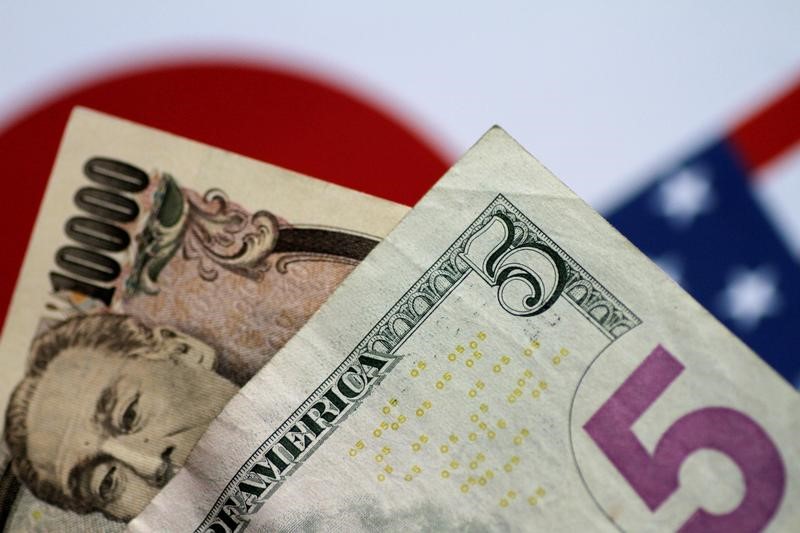
But gains in Asian currencies were tempered by hawkish signals from the minutes of the Fed’s June meeting, while anticipation of key payrolls data on Friday also kept sentiment cautious.
The Japanese yen took some relief from weakness in the dollar, with the USDJPY pair falling 0.2% after nearly crossing the 162 level on Wednesday.
The pair was trading well above 160- the level that had last attracted government intervention in May. With Japanese officials reiterating their commitment to defend the yen, traders remained on guard over any potential intervention in the coming days.
Traders speculated that the government would take advantage of low trading volumes during the July 4 U.S. market holiday to intervene. The government’s intervention in May had taken place during a Japanese market holiday.
The dollar index and dollar index futures both fell about 0.1% in Asian trade on Thursday, extending steep overnight declines.
Softer-than-expected ADP employment data and a weak purchasing managers index reading on non-manufacturing activity ramped up bets on a cooling U.S. economy, which traders bet will push the Fed into cutting interest rates sooner.
Soft labor data also spurred bets on a weak nonfarm payrolls reading on Friday.
Traders ramped up bets that the Fed will enact a 25 basis point cut in September. The CME Fedwatch tool showed traders pricing in a nearly 66% chance of a September rate cut, up from 59% seen a day ago.
Still, the minutes of the Fed’s June meeting showed policymakers remained unconvinced that inflation was coming down to an extent where rate cuts will be viable. Some officials still saw the need for higher interest rates to bring down inflation.
Several Fed officials, most notable Chair Jerome Powell, also warned this week that while the bank had made some progress towards combating inflation, it still lacked the confidence to begin trimming rates.
Still, most Asian currencies advanced against a softer dollar. The Australian dollar’s AUDUSD pair rose 0.2% even as data showed the country’s trade balance shrank more than expected in May, due to weak exports.
The Chinese yuan’s USDCNY pair was flat, remaining close to seven-month highs amid waning confidence in the Chinese economy.
The South Korean won’s USDKRW pair fell 0.4%, while the Singapore dollar’s USDSGD pair fell 0.1%.
The Indian rupee’s USDINR pair steadied after coming close to record highs this week.
To read the full article, Click Here

